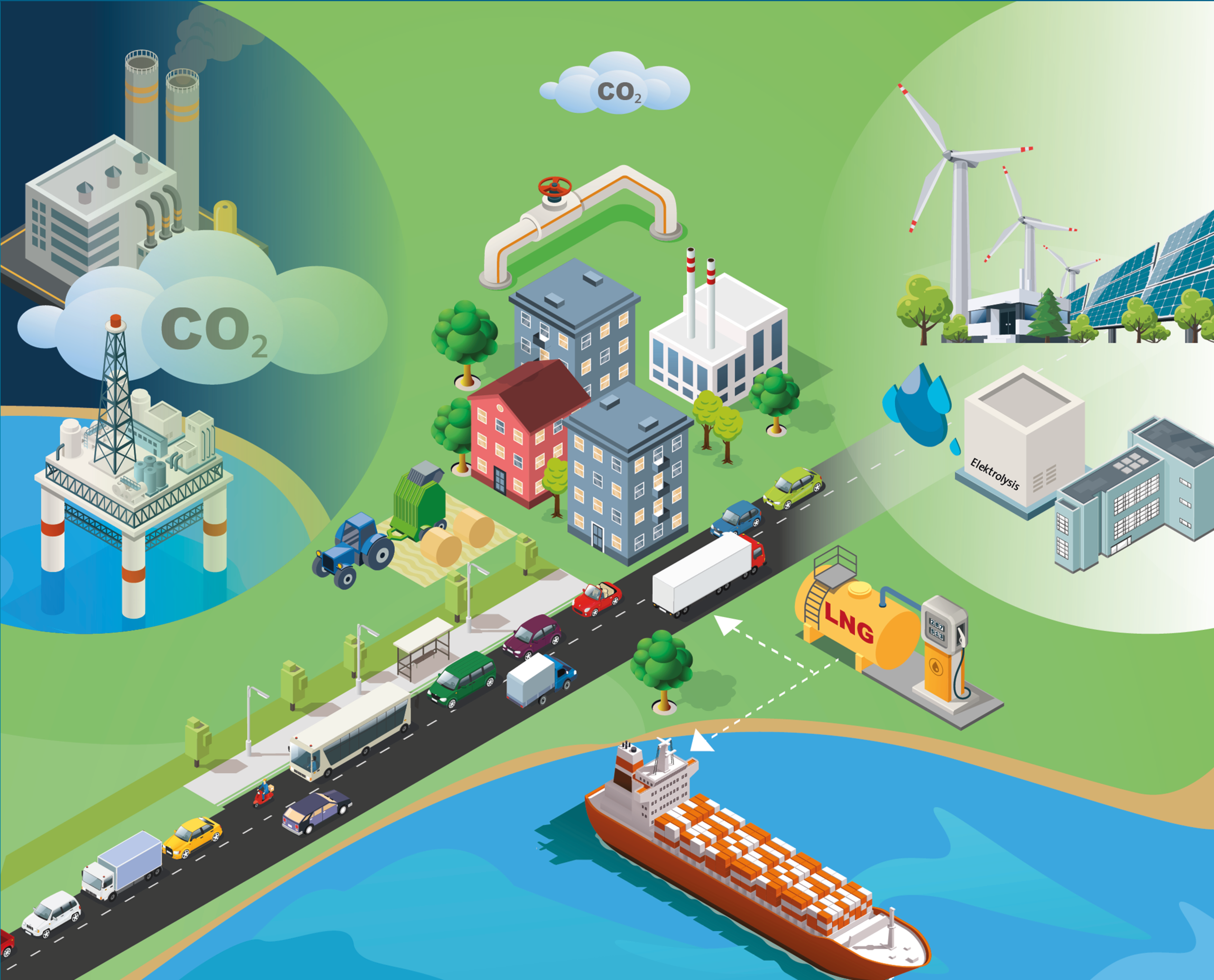Mission 8
On the way to a hydrogen world, the use of fossil natural gas is already enabling CO2 savings today and paving the way for the energy transition.
The goal is clearly defined: emissions of climate-relevant gases, in particular CO2, are to be rapidly reduced further and further. Fossil fuels such as oil, gas and coal must be increasingly replaced by CO2-neutral fuels. With hydrogen and gaseous and liquid fuels produced from hydrogen, it will be possible in the future to operate engines in a CO2-neutral manner. However, there is still a long way to go, and many challenges must be overcome before hydrogen and derived fuels are available at competitive cost and in sufficient quantities. To bridge this time, gas of fossil origin can serve well. Moving away from oil and coal and switching to the use of gas are major steps towards greater environmental protection and lower CO2 emissions. Importantly, methane emissions along the entire gas value chain must be minimized or completely avoided as far as possible. More on this in Mission 7.
Gas-fired power plants have long proven their worth; most of them convert natural gas into electricity. They are of immense importance in the context of the energy transition and the coal phase-out, because they can be operated particularly flexibly. They are therefore ideally suited to buffer the fluctuating supply of electricity from renewable energies (see Mission 2). And they operate much more cleanly than coal-fired power plants: In relation to a unit of energy produced, the direct CO2emissions of natural gas are around 40% lower than those of coal.
In other applications, too, gas is already helping to significantly reduce soot, nitrogen oxides and CO2. In shipping, for example, liquefied natural gas (LNG) is already being used increasingly. This fuel is already known to a wider public, as a large cruise ship is already being successfully operated with LNG-fired engines. Further LNG ships – not only cruise ships – are in the order books of the shipyards and a large part of new ships are nowadays ordered with dual fuel engines. These engines are capable of running on LNG as well as a traditional liquid fuel, making them particularly flexible to operate and therefore future-proof.
It doesn't always have to be a new ship, ships that are already afloat can also be converted to the more environmentally friendly fuel – the experts refer to this as "retrofitting." This is demonstrated, for example, by a container ship that has already been running on LNG since 2017. And retrofitting ships in particular is worthwhile, especially in view of the enormous service life of 20, 30 and more years.
Switching to gas is not yet the final step in the energy transition. But in the long term, it opens the door to even better alternatives and paves the way for the energy transition on the high seas as well. In the future, for example, synthetic LNG from renewable energy (power-to-gas) could help make shipping CO2-neutral.


